annually
Type of resources
Available actions
Topics
Keywords
Contact for the resource
Provided by
Years
Formats
Representation types
Update frequencies
Service types
Scale
Resolution
-
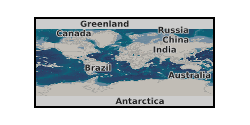
This dataset contains tabulated production, consumption and trade data on minerals in the UK together with authoritative commentary on current developments in the minerals industry. Data are supplied from official sources, companies and trade associations. Where data cannot be acquired, estimates are given. In addition to UK (country) data, statistics are also given at planning region level and, for certain minerals, at county level. Units of measurements are tonnes, kilograms or carats, according to commodity. Value is also provided for imports and exports. The information will be of value to all those interested in Britain's minerals. The data captured by BGS spans from 1973 onwards and is updated annually.
-
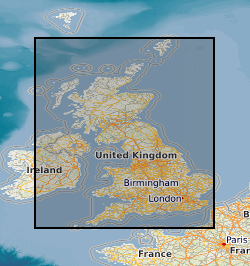
Laboratory results for the analysis of geochemical samples (stream sediments, soil and water) collected for the high resolution geochemical mapping of mainland Britain. The programme of regional geochemical sampling began in 1968 in the northern Highlands of Scotland. Sample sites are described on field slips. Chemical results are subjected to high level of quality control in the laboratory. Results are the raw data processed (standardisation and normalisation) to give seamless geochemical images and the value added G-BASE (Geochemical Baseline Survey of the Environment ) data in the BGS geochemistry database.
-
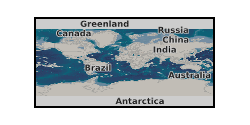
Collection of annual publications from the global network of magnetic observatories. They typically contain tabulations of hourly, monthly and annual mean values of the geomagnetic elements. Contains all magnetic observatory year books held by the World Data Centre for Geomagnetism (Edinburgh).
-
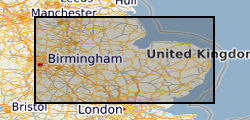
The data comprises GIS layers representing the permeability of artificial deposits for Great Britain. The permeability data has been derived from DiGMap-GB (Digital Geological Map Data of Great Britain), and therefore reflects the scale of DiGMap-GB. For the majority of the Great Britain, the scale is 1:50,000. The data is updated annually, or after a major new release of DiGMap-GB. The permeability data describes the fresh water flow through these deposits and the ability of a lithostratigraphical unit to transmit water. Maximum and minimum permeability indices are given for each geological unit to indicate the range in permeability likely to be encountered and the predominant flow mechanism (fracture or intergranular). Neither of the assigned values takes into account the thickness of either the unsaturated or saturated part of the lithostratigraphical unit. The data can be used freely internally, but is licensed for commercial use. It is best displayed using a desktop GIS, and is available in vector format as ESRI shapefiles and MapInfo TAB files.
-

The database contains images of the UK, recorded from various airborne multispectral sensors operated by or on behalf of the NERC airborne remote sensing facility. It includes data from the ATM, CASI, PMI, and thermal line scanner instruments. The data are stored in proprietary formats on various types of magnetic media. Full datasets belong to the NERC but BGS has access, the NERC earth observation data centre, NEODC, hold the data. For all enquiries contact NEODC at http://www.neodc.rl.ac.uk.
-
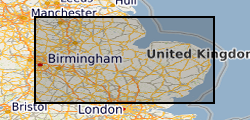
The data comprises a GIS layers representing the permeability of Superficial geological deposits for Great Britain. The permeability data has been derived from DiGMap-GB (Digital Geological Map Data of Great Britain), and therefore reflects the scale of DiGMap-GB. For the majority of the Great Britain, the scale is 1:50,000, however in areas where the geology is not mapped to this scale, the next best available scale, 1:625:000, is used. The data is updated annually, or after a major new release of DiGMap-GB. The permeability data describes the fresh water flow through geological deposits and the ability of a lithostratigraphical unit to transmit water. Maximum and minimum permeability indices are given for each geological unit to indicate the range in permeability likely to be encountered and the predominant flow mechanism (fracture or intergranular). Neither of the assigned values takes into account the thickness of either the unsaturated or saturated part of the lithostratigraphical unit. The data can be used freely internally, but is licensed for commercial use. It is best displayed using a desktop GIS, and is available in vector format as ESRI shapefiles and MapInfo TAB files.
-

The (GEBCO) aims to provide the most authoritative, publicly available bathymetry datasets for the world's oceans. Coastline dataset to support the General Bathymetric Chart of the Oceans.
-

The GeoSure Insurance Product (GIP) dataset identifies potential natural ground movement hazard within Great Britain by postcode. These data are available in GIS point feature and database format, updated on a 6 monthly basis. The GeoSure Insurance Product represents the end of an interpretation process starting with the BGS Digital Geological Map of Great Britain at the 1:50,000 scale (DiGMapGB-50). This digital map is the definitive record of the types of rocks underlying Great Britain (excluding Northern Ireland), as represented by various layers, starting with Bedrock and moving up to overlying Superficial layers. In 2003, the BGS published a series of GIS digital maps identifying areas of potential natural ground movement hazard in Great Britain, called GeoSure, demonstrating a grade of potential for 6 separate hazards: shrink-swell clays, slope instability, dissolution of soluble ground, running sand, compressible and collapsible deposits. These maps were derived by combining the rock-type information from DiGMapGB-50 with a series of other influencing factors which may cause the geological hazards (e.g. steep slopes, groundwater). In 2005, the BGS used the GeoSure maps to make an interpretation of subsidence insurance risk for the British property insurance industry, released as the GeoSure Insurance Product. This represents the combined effects of the 6 GeoSure hazards on buildings in a postcode database. The combined hazard is represented numerically in the database as the Total Hazard Score, with a breakdown into the component hazards. The methodology behind these data involves balancing the 6 GeoSure natural ground stability hazards against each other. The GeoSure maps themselves have a fivefold coding (A to E), and the balancing exercise involves comparing each level across the six hazards e.g. comparing a level C shrink-swell clay area with a level C running sand area. Each level of each of the hazards is given a 'hazard score' which can then be added together to derive a Total Hazard Score within a 300m radius from the population weighted postcode point.
-

The DiGMap Plus dataset is a series of GIS layers describing the engineering properties of materials from the base of pedological soil down to c. 3m depth (ie the uppermost c.2m of geology). These deposits display a variable degree of weathering, but still exhibit core engineering characteristics relating to their lithologies. The 'Strength' dataset covers England, Scotland and Wales and characterises the material lithology, and its strength (for field description purposes) as outlined in documentation relating to BS5930 (1999 and 2003 and Eurocode7).
-
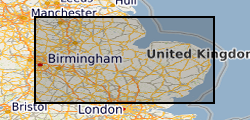
The data comprises a GIS layer representing the permeability of bedrock for Great Britain The permeability data has been derived from DiGMap-GB (Digital Geological Map Data of Great Britain), and therefore reflects the scale of DiGMap-GB. For the majority of the Great Britain, the scale is 1:50,000, however in areas where the geology is not mapped to this scale, 1:250,000 data are. The data is updated annually, or after a major new release of DiGMap-GB. The permeability data describes the fresh water flow through geological deposits and the ability of a lithostratigraphical unit to transmit water. Maximum and minimum permeability indices are given for each geological unit to indicate the range in permeability likely to be encountered and the predominant flow mechanism (fracture or intergranular). Neither of the assigned values takes into account the thickness of either the unsaturated or saturated part of the lithostratigraphical unit. The data can be used freely internally, but is licensed for commercial use. It is best displayed using a desktop GIS, and is available in vector format as ESRI shapefiles and MapInfo TAB files.
 NERC Data Catalogue Service
NERC Data Catalogue Service